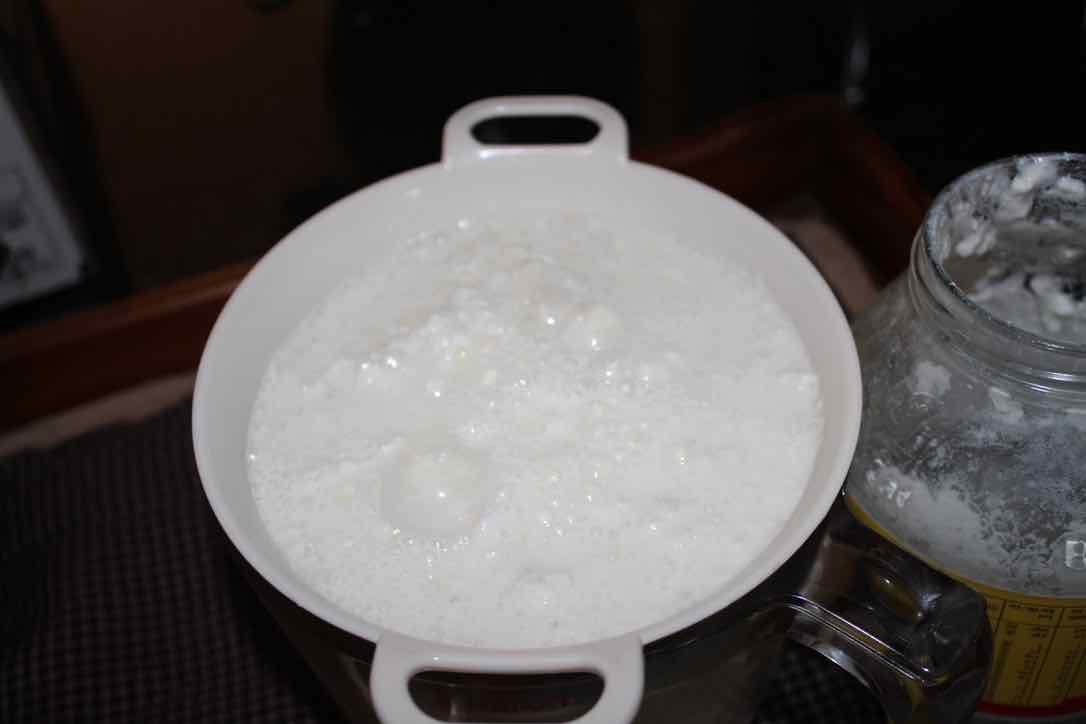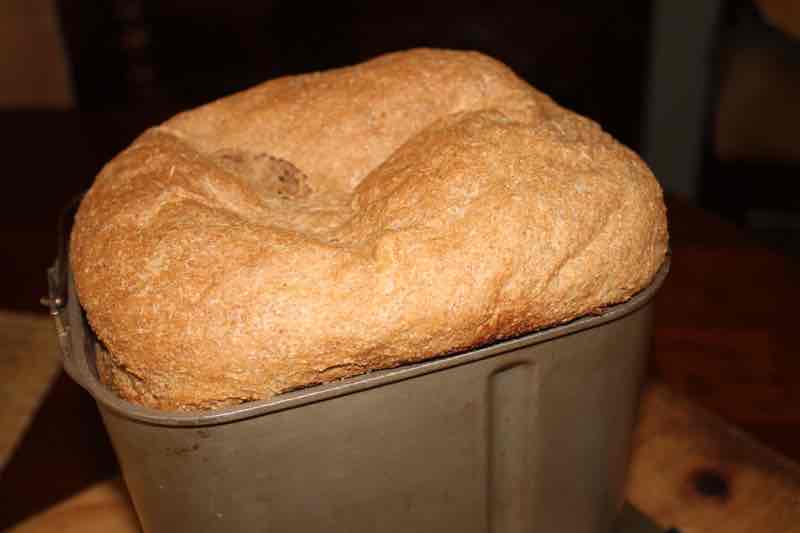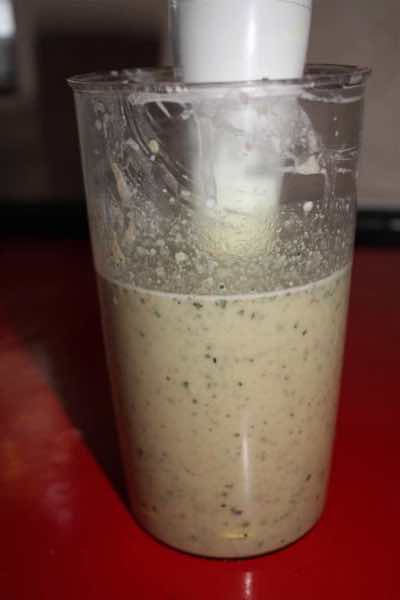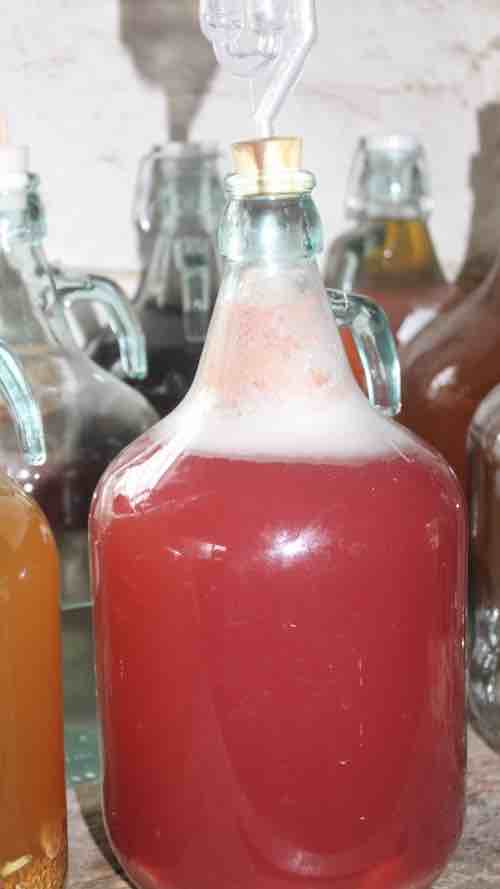Re-establish the intestinal microbes
Re-establish the intestinal microbes using probiotics made very simply in your own kitchen; it takes only five minutes.
There are over 1000 species of bacteria, viruses and yeasts in the healthy human digestive tract; the so-called "microbiome."
So important is this microbiome that it is often described as one of the organs, all on its own; these bugs play a critical role in metabolism and our immune systems.
It is noteworthy that those with a healthy microbiome do not get Long Covid[1].
Taking responsibility for our own wellness means in part learning how to re-establish the intestinal microbes.

"The American Gut Project at UC San Diego School of Medicine found that the single most-powerful predictor of a healthy bowel was the diversity and variety of plants in your diet."
- Dr W Bulsiewicz MD, gastroenterologist[1].
Re-establish the intestinal microbes
For example the carbohydrates in our diet should include so-called "resistant starch;" that which is hardly assimilated in the proximal digestive tract, reducing any blood sugar surge.
Instead that resistant starch passes through intact to the colon where it is fermented, forming important short-chain fatty acids that are vital for a healthy immune system.
The pectin in fruit is one such example of the fibre in our food.
Various researchers have found that the following are important.
- A lessened diversity of these bugs is associated with recurrent infections of the gut.
- A low bacterial count in the colon is associated with a host of serious illnesses such as insulin-resistance, diabetes and inflammatory cytokine storms; and even neurodegenerative conditions like Alzheimer's disease.
Pathogens, antibiotics and ultra-refined foods
A healthy biome makes one far less susceptible to pathogens that we all encounter, probably on a daily basis; the friendly bugs simply outnumber the invading disease-causing bacteria, viruses or yeasts like Candida.
Overuse of antibiotics, refined foods and the chemicals added to our nosh all contribute to an inadequate biome. Ironically artificial-sweeteners have also been fingered leading to an increase in insulin resistance and metabolic syndrome.
It is relatively simple to re-establish these microbes using what are known as probiotics. They can be purchased at pharmacies and health food shops. We think a better solution is to ferment your own; that's how it has been done for millennia.
Ferment your own probiotics
Kefir for example is a culture with over 30 different strains of healthy bugs, far more diverse than those in capsules. It uses ordinary pasteurised milk and a starter which you can get from a nutrition shop or a friend with a green kitchen. There is a non-dairy form but it requires a lot of sugar; I don't recommend it.
All that’s needed is a small plastic colander and several wide-necked glass jars. Every morning one strains off the whey, returning the curds to a clean bottle which is topped up with fresh milk. It has a not unpleasant taste like a strong yoghurt.
At the cost of one cup of milk per day, this is the cheapest medicine I know of. It’s also a particularly good source of absorbable calcium.
On a personal note, an anecdote of no scientific value I have suffered from epigastric pain for some fifteen years getting gradually worse; a scope revealed a helicobacter infection, the cause of ulcers in the stomach. Medication did not help.
Within one week of taking kefir on a daily basis the symptoms have been drastically reduced and nights are now only very rarely disturbed with indigestion and heartburn after a dietary indiscretion.
Coffee after dinner remains completely verboten.
Kefir smoothies
We continue to enjoy our kefir regularly in smoothies but recently whilst on a two week holiday there was no resurgence of symptoms; it’s possible that taking a homemade probiotic for just a few days a month would be adequate after having restored the healthy gut.
Whilst our green home is concerned in the main with matters such as capturing sunlight and rainwater from the heavens for the planet’s sake, it covers also the broad gamut of small things that happen in the garden and kitchen; those that contribute to wholesome food and wellness.
We call our home a Cyan Zone[3]; recreating green and blue issues, not only beneficial for our own wellness but that of the planet too.
So re-establish the intestinal microbes if you want a happy tum and have the desire to enjoy a long life without medication; and dread having constantly to consult doctors.
Terminology
Learning how to re-establish the intestinal microbes in our bodies, and supplying them with the nutrients they need is turning out to be one of the most important and simple things that each of us could and should be doing. It is being described in the literature using terminology like food as medicine.
1. Microbiome
The microbiome also known as the "intestinal flora," consists of the healthy bacteria, viruses and yeasts living in the gut. In the normal body they weigh over 2kg and scientists are finding they play a huge role in our wellness; from balancing the immune system to allergies and metabolic diseases for example.
2. Probiotics
The probiotics are the beneficial bugs living in the gut; actually they inhabit diverse parts of the body too such as the vagina, bladder and armpit. What is important is not just the number of these bacteria and other microorganisms but also how broad the spectrum of these little creatures is; there should be over one-thousand differing species.
Getting our probiotics from a supplement which is unlikely to contain more than half a dozen species actually reduces this broad spectrum of friendly bugs.
Common foods that are rich in these microorganisms are for example kefir, sauerkraut and kimchi; maas and to a lesser extent unpasteurised yoghurt too. Home brewers will be enjoying tipples rich in these living creatures[4].
3. Prebiotics
Prebiotics are the foods that the intestinal flora feed on. They consist in the main of the fibre from our meals that is not digested nor absorbed in the small intestine.
The fibrous portion of whole grains, legumes and fruit for example makes up what scientists call prebiotics; vegetables, nuts and seeds too.
Specific examples might be the pectin in an apple, the beta-glucan in oats and the lignans in bran. The total weight and the diversity of these plant fibres are both vastly important to our overall wellness.
The net-carb is what remains after this indigestible fibre is subtracted from the total starch.
Refined foods have almost no indigestible fibre; that is why we bake our own artisan bread.
Can caring for our own health ever be too much trouble?
Learning to distinguish between real and fake bread is very high on our agenda.

4. Post-biotics
Post-biotics are active beneficial compounds that are produced by the microorganisms in food like sauerkraut; and those formed by the bugs in the gut.
Short-chain fatty acids for example provide energy for the cells lining the gut; they help in the fight against the pathogens that cause inflammation. They lower cholesterol too; "butyrate" mediates in the immune system.
These post-biotics have an influence on distant organs. Another of these short chain fatty acids called "propionate" has been shown to reduce appetite for example through its effect on the hypothalamus in the brain. It also lowers blood cholesterol. Many of the obese would shed those unwanted pounds more easily and others could get completely off statins if they re-established the intestinal microbes.
Furthermore there is growing interest in the proven fact that the propionate produced by the friendly flora in the gut "tunes the airway response" in chronic obstructive lung disease; cystic fibrosis in children and emphysema in the elderly.
The intestinal microbes have a profound influence on overall wellness.
“Encouraging patients to adopt anti-inflammatory, fiber rich diets and consider probiotic or prebiotic supplementation may support gut health and reduce lung inflammation."
- Dr Inês Brandão, Head of Research at Centro de Apoio Tecnológico Agro Alimentar
Propionic acid
Don't confuse propionic acid with the short-chain fatty acids, by the way. It is one of the "permitted" preservatives used to suppress bacteria and natural yeasts in bakery products; the exact antithesis of sourdough bread.
Dry eye disease
Interesting new research confirms that those suffering from dry eyes with grittiness and itching have an imbalance in the microbiome[5].
It's the first time I have heard of a microbiome in the eyes. Metabolites produced by excessive numbers of Acinetobacter species cause this itching and dryness.
At this stage there are no suggestions on how to improve this imbalance except through maintaining what they call the "central microbiome site;" the gut.
"There are detectable differences in the bacterial richness, diversity and community structure of the conjunctiva between individuals with dry eyes and healthy controls."
Sufficient fiber
Only 5% of those enjoying typical grocery store food are getting the required dietary allowance of fibre; an imperative for the intestinal microbes.
Take home
The take-home on this extremely complex subject is that we should all regularly be preparing and enjoying fermented foods from our own kitchens. Kefir is the simplest that we have discovered, containing over 30 diverse friendly bugs for the microbiome.
And secondly we should be eating as many different fibrous foods as possible; they provide the nourishment, the prebiotics that keep the normal flora happy. It so happens they also help prevent serious colo-rectal disease.
Thirdly we should avoid those chemicals that are known to be destructive of the microbiome; artificial-sweeteners for example.
Last but not least we should avoid the refined foods that have been stripped of their nutrients and fibre if we want to re-establish the intestinal microbes.

This kefir breakfast smoothie is a regular in our green home; it takes less than five minutes to prepare, start to finish.
Home brewing
There are many foods that are rich in the bugs that populate our alimentary canals. Home-brewing in general is perhaps one of the more difficult ways of acquiring different friendly yeast species.
An exception is this 1 gallon wheat beer recipe. Just be careful though because if you add a commercial yeast it will be very strong; start drinking after a few days rather than waiting for fermentation to stop.
Another option but one that in practice is only open to beekeepers is to brew your own mead; using honey from the gleanings that would otherwise be wasted.
Often these meads would utilise different fruits, also preserving their important phytonutrients to brew what is known as a melomel.
This cherry-guava honey mead for example is a great favourite; it is alive with yeast cells that contribute to the diversity and numbers of the microbiome.

Re-establish the intestinal microbes
Re-establish the intestinal microbes using kefir, meads and wheat beer; or simply fermenting foods like sauerkraut.
When browsing use right click and Open Link in New Tab, or you may get a bad gateway signal.
The material expressed on this page is gleaned from the nutritional and environmental literature; it is clearly referenced. A plain distinction is made between the author's opinion and that which is scientifically proven. When in doubt consult your health professional.
To suggest a correction or clarification, write to Dr Bernard Preston here. Contact.
Newsletter
Our newsletter is entitled "create a cyan zone" at your home, preserving both yourself and Mother Earth for future generations; and the family too, of course. We promise not to spam you with daily emails promoting various products. You may get an occasional nudge to buy one of my books.
Here are the back issues.
- Lifestyle and ideal body weight
- What are ultra-processed foods?
- Investing in long-term health
- Diseases from plastic exposure
- Intensive lifestyle management for obesity has limited value
- A world largely devoid of Parkinson's Disease
- The impact of friendly bacteria in the tum on the prevention of cancer
- There's a hole in the bucket
- Everyone is talking about weight loss drugs
- Pull the sweet tooth
- If you suffer from heartburn plant a susu
- Refined maize meal and stunting
- Should agriculture and industry get priority for water and electricity?
- Nature is calling
- Mill your own flour
- Bake your own sourdough bread
- Microplastics from our water
- Alternative types of water storage
- Wear your clothes out
- Comfort foods
- Create a bee-friendly environment
- Go to bed slightly hungry
- Keep bees
- Blue zone folk are religious
- Reduce plastic waste
- Family is important
- What can go in compost?
- Grow broad beans for longevity
- Harvest and store sunshine
- Blue zone exercise
- Harvest and store your rainwater
- Create a cyan zone at your home
Did you find this page interesting? How about forwarding it to a friendly book or food junkie? Better still, a social media tick would help.
Address:
56 Groenekloof Rd,
Hilton, KZN
South Africa
Website:
https://www.bernard-preston.com